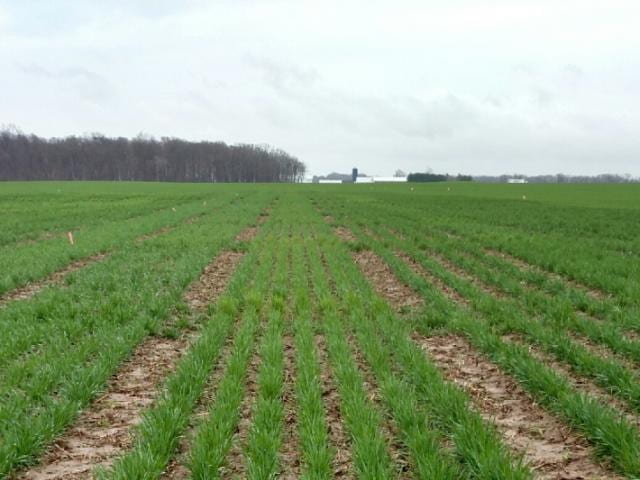By: Jim Noel
 April was a challenging month. It was a cold month with most of Ohio -1F to -3F below normal for temperatures. We saw late freezes and snow events. Because of the cold, precipitation was generally around or slightly below normal in the 60-120% of normal range. However, with limited evaporation and evapotranspiration, soils did not dry much.
April was a challenging month. It was a cold month with most of Ohio -1F to -3F below normal for temperatures. We saw late freezes and snow events. Because of the cold, precipitation was generally around or slightly below normal in the 60-120% of normal range. However, with limited evaporation and evapotranspiration, soils did not dry much.
Looking forward, May will start off challenging but improvements are forecasted. The first week of May will see a wetter period across Ohio with temperatures generally below normal. Rainfall will range from just under an inch to over 2 inches in places. As we move into the middle and end of May, expect a pattern change to warmer and drier than normal which should open the rapid window for planting. Continue reading

 After a brief period of wetness to start October, harvest season looks pretty good.
After a brief period of wetness to start October, harvest season looks pretty good. Quite often this summer, our skies have been filled with smoke from western wildfires. Strong, dominant high pressure has focused record-breaking heat in the west while here across the Midwest, westerly to northwesterly flow has funneled that smoke our direction (See Figure 1 for current active fires, air quality, and smoke plume across the U.S.). Typically, this smoke remains at high altitude, resulting in hazy sunshine. What impact can this filtered sunshine have on crop production?
Quite often this summer, our skies have been filled with smoke from western wildfires. Strong, dominant high pressure has focused record-breaking heat in the west while here across the Midwest, westerly to northwesterly flow has funneled that smoke our direction (See Figure 1 for current active fires, air quality, and smoke plume across the U.S.). Typically, this smoke remains at high altitude, resulting in hazy sunshine. What impact can this filtered sunshine have on crop production? 



